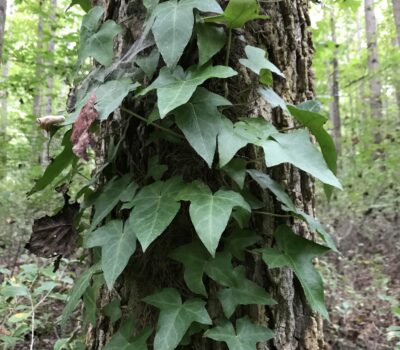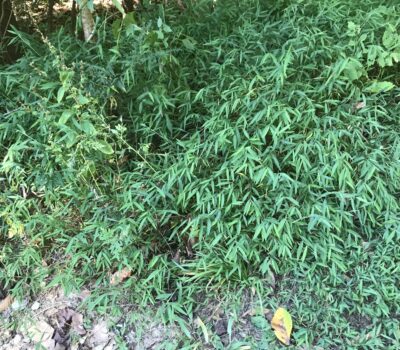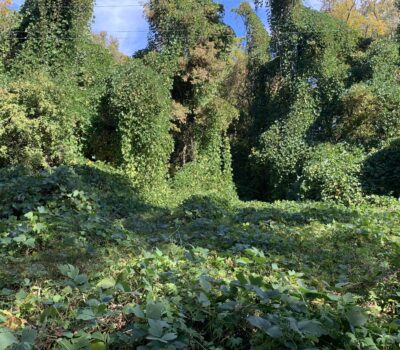Ask a Naturalist: Introduced and Invasive Plants of Gateway
We are the most important medium for the modern dispersal of plants and animals from one place to another. When humans move, we intentionally or unintentionally introduce plants and animals we treasure as food, medicinal, and ornamental, to a new environment. Corn and potatoes were transplanted to the world from South America, honeybees from Asia and wheat, grapes, and sugarcane from Europe. Other plants and animals unintentionally hitchhike along our movement pathways and find themselves in a new environment. Imagine how you would feel and behave if you found yourself in an unfamiliar territory. The instinct to survive undoubtedly makes these newcomers utilize all adaptation strategies, reproduce quickly, and leave behind robust populations.
Newly arrived plants become a part of the landscape over millennia. E.g., the common plantain (Plantago major) and the dandelion (Taraxacum officinale), that is native to Europe, Asia or Africa; and was brought to North America by the early settlers for food and medicine. These plants have naturalized and become a part of the ecosystem. Similarly, the white clover (Trifolium repens), which originated in Asia and Europe and is now found worldwide, is prized as animal fodder and as an option for the present-day ecological lawn/gardening solution. On the other hand, the Japanese stiltgrass (Microstegium vimineum) that was accidentally introduced as packing materials in shipments from Asia in the early 90’s has spread to all Southeastern US states due to its high seed production capacity, often inhibiting the growth of other native herbaceous plant species.
At this point, it is important to get to the bottom of the terminologies. You have probably heard it all; introduced, alien, exotic, noxious, invasive so on and so forth. They all refer to the plant species from another part of the world. Introduced species can eventually become invasive under favorable conditions. Such favorable conditions may not just be environmental. Our preference for certain exotic species can actually promote their escape from gardens and fields, aiding in their invasive nature. When that happens, some plants can produce copious amounts of seeds, aggressively take over large areas, and damage the ecosystem by replacing the native species and thus becoming noxious invasive species.
Pictures- Some invasive species of Gateway Nature Preserve. Clockwise from left- English Ivy on a tree. Thick ground cover of stiltgrass. Kudzu field intermingled with native (greenbrier, elderberry, pokeweed) and introduced species (Japanese hops, stiltgrass, Japanese honeysuckle, multiflora rose etc). (Photos by Sau Silwal).
These invasive plant species can produce large quantities of seed, which are often distributed by birds, wind, or humans, allowing the seed to move great distances. These plants have aggressive root systems that spread long distances from a single plant and often grow so densely in the soil that they smother the root systems of surrounding vegetation. Interestingly, in addition to the vigorous growth, some invasives can produce chemicals, called allelopathy, in their leaves or root systems, which stop the growth of other plants around them.
Therefore, it is important to remember that not all introduced plant species become invasive. Introduced plant species (meaning non-native) that successfully reproduce in their new environment and harm the ecosystem by utilizing their best possible adaptation strategies are considered invasive. The three unique ecosystems of Gateway Nature Preserve (GNP): the Forest, Salem Creek, and the Meadow, support robust invasive plant species populations. The situation is common to all urban greenspaces like Gateway, which shows the ecosystem composition tightly linked to history, culture and livelihoods. As discussed above, the majority of invasive plants are of Asian and European origin, brought over to fulfill specific needs such as food, fodder, or medicinal purposes. Below is a list of the most common invasive plant species at the Gateway Nature Preserve (GNP) ecosystem. The information in the table below will help you identify and locate the invasive plants present at GNP.
Table 1: Most common invasive plant species at GNP.
Your Role:
It is very much in our hands to reduce the spread of invasive plant species.
- Practice native plant gardening – contact us or visit websites such as The NC Botanical Garden to get information on what is native to your area. Join GNP to learn native plant gardening practices. Other places, such as the NC Native Plant Society, also offer useful information.
- Be aware that many plants and trees used for ornamental purposes could be considered invasive. Popular examples are Bradford Pear, Crape Myrtle, Japanese Holly, Boxwood etc. For new plantings, avoid these trees and shrubs. Reference the online plant sites and/or consult greenhouse horticulturalists for native alternatives.
- If you are growing a known invasive plant, keep the gardening area under control by containing the area to prevent the plant from spreading. Remove saplings that may grow in the vicinity of the parent plant. Be aware that some invasive plants may spread by runners (above ground, for example, Bermuda Grass) or rhizomes (roots just below ground level, for example, Bamboo) quite aggressively.
- The USDA Invasive Plant Database, your local extension office and non-profit organizations such as NC Invasive Plant Council can be a resource for identification and removal techniques of invasive plant species.
Sources:
- NC State Extension Publications. 2018. “Controlling English Ivy in Urban Landscapes |.”
- GNP Field Observation and data recording by Dave & Sau
- Grebenstein, E. (2013, April 19). Escape of the invasives: Top six invasive plant species in the United States. Smithsonian Institution.
- “Home, Yard & Garden Newsletter at the University of Illinois.” Controlling Star-of-Bethlehem.
- Invasive plants in NC, 2008, NC DOT
- Missouri Department of Conservation. “Kudzu Control.” Missouri Department of Conservation.
- NC Invasive Plant Council- Invasive Factsheets and Tools by Region
- North Carolina Wildlife Federation. 2022. North Carolina Native Pollinator Shrubs -. (2022, June 30).
- North Carolina Wildlife Federation Blog Post. 2023. Taking Action Against Invasive Plants in North Carolina.
- “The Exchange of Plant and Animal Species between the New World and Old World | Encyclopedia.com.”
- USDA Plants Database. Plants.usda.gov.com, plant database information.



